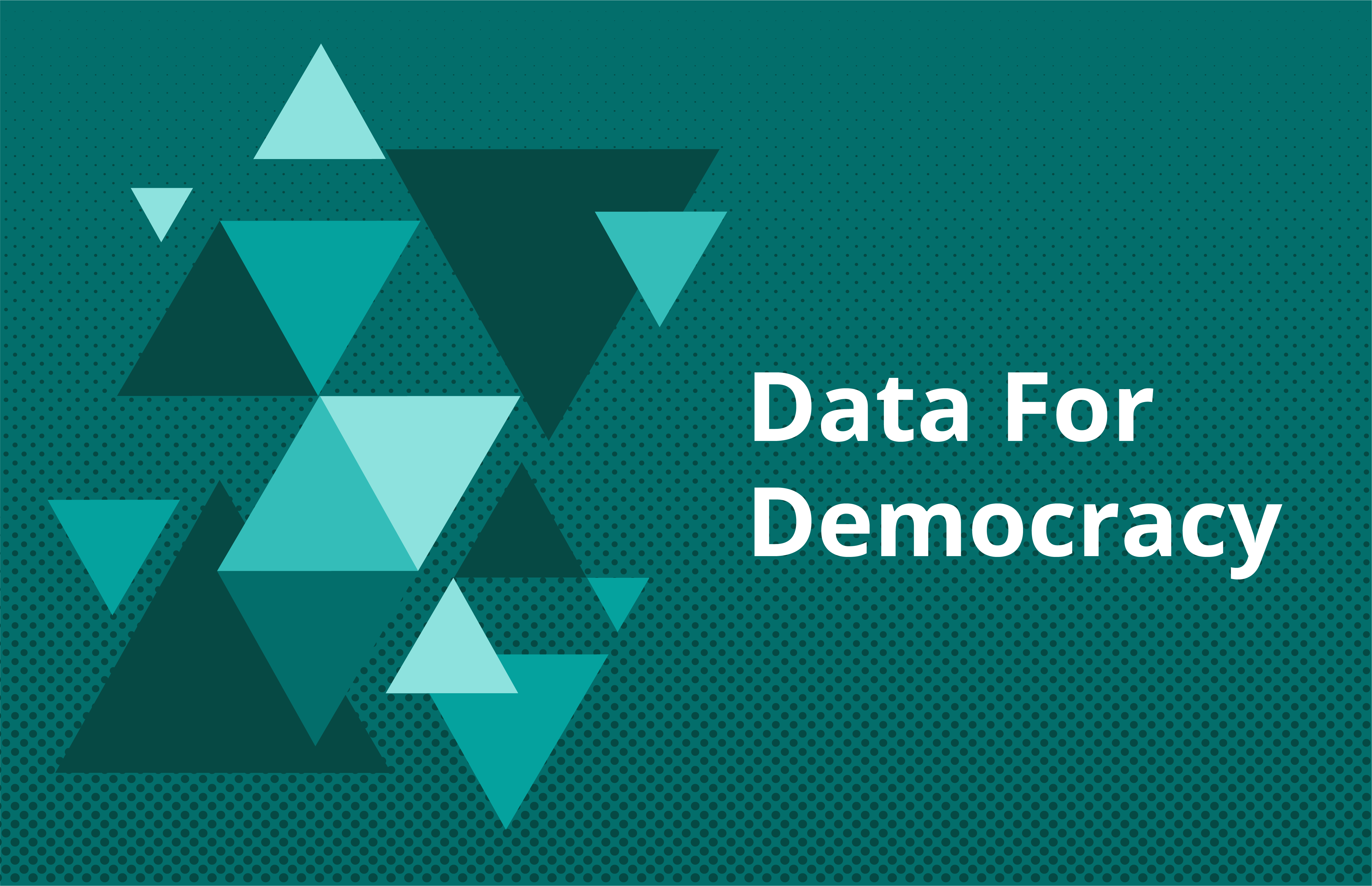Is This The Third Party Moment? July 24, 2022
Our research is clear: Americans are dissatisfied with the political status quo and agitating for change. This unique voter landscape is ripe for a third-party solution — but strong polarization and other systemic barriers must be overcome for it to work.
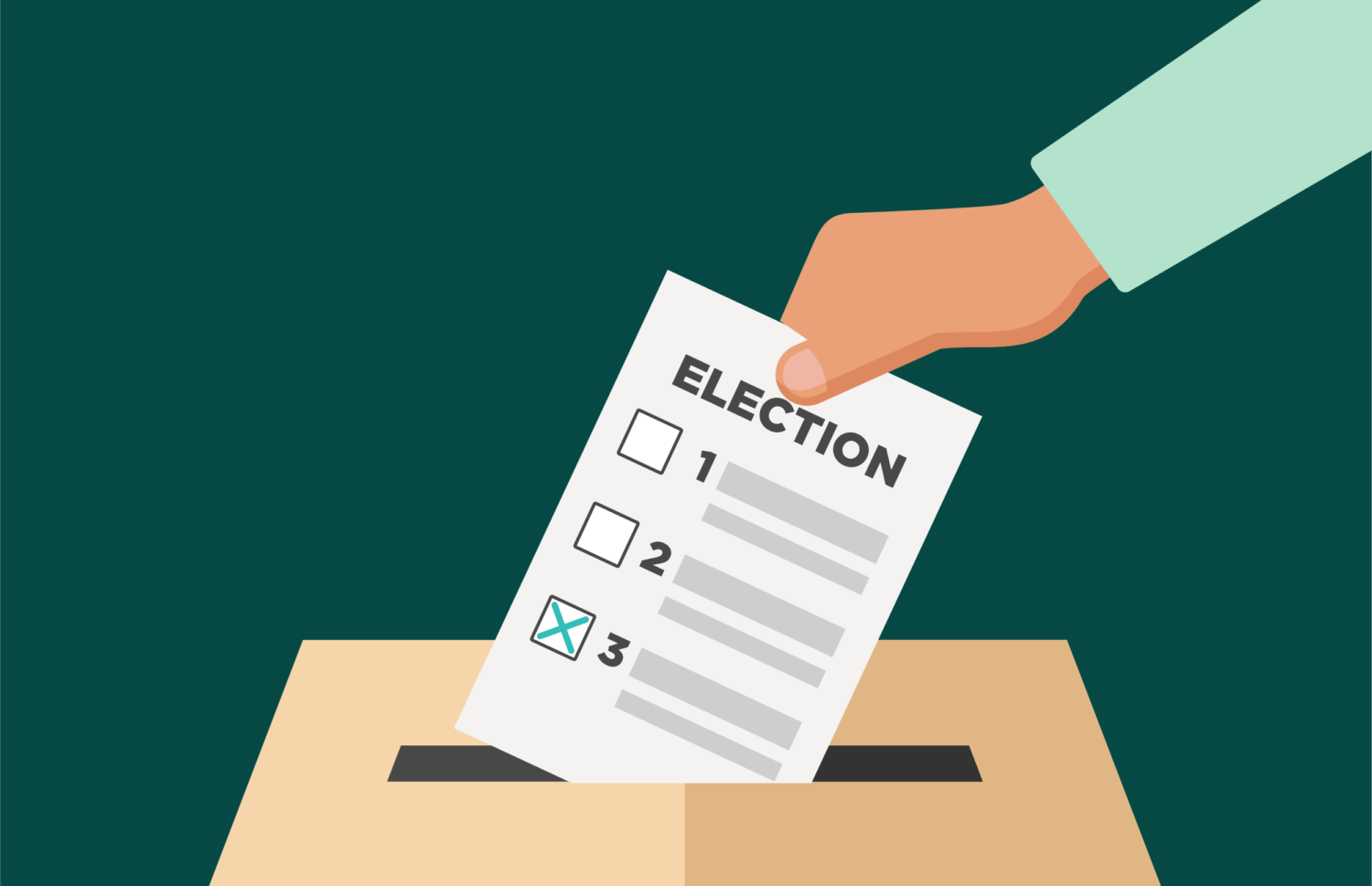
1. Negative Partisanship: Potential Catalyst for Third Party Tent
Instances of negative partisanship — in which Americans vote for a party as the “lesser of two evils” — may be opening up a potential opportunity to rally around a third option at the ballot box.
When we look at political moderates on both sides of the ideological spectrum specifically, almost half of ideological moderates (46%) exhibit negative partisanship. While these moderate voters have a party preference, it’s driven less by which party they are wedded to, and more by which they dislike the least.
Share this report
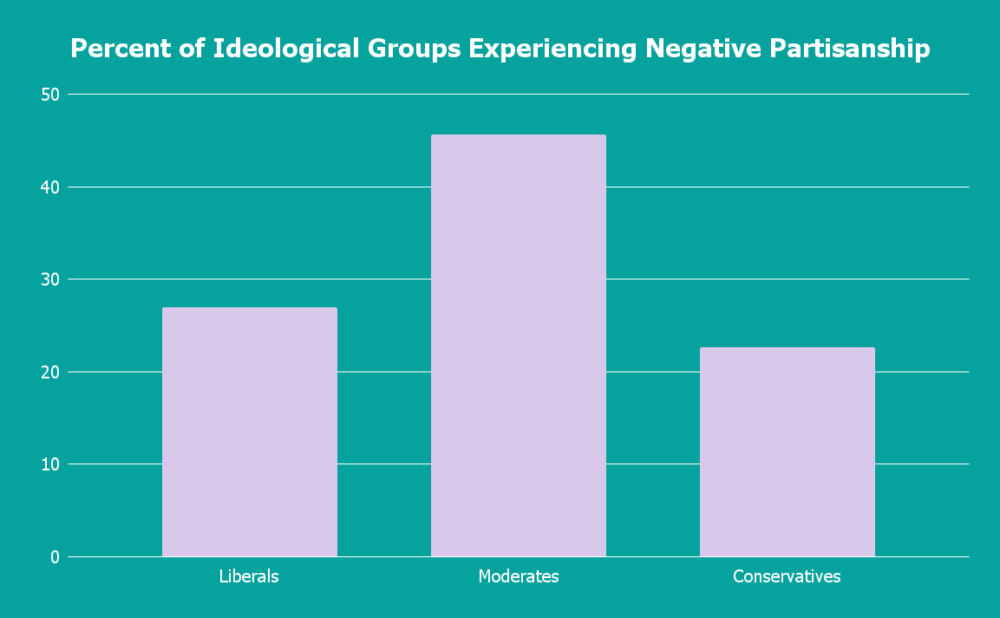
This moderate group can be mobilized to coalesce around a third party that provides an alternative to the current two-party system.
But: the political polarization from those on the far right and left is intense, and presents a significant hurdle. 61% of negative partisanship on both the Democratic and Republican sides comes from those who identify as either “somewhat” or “very” liberal or conservative. This ideological scattering raises obstacles to the creation of a broad third-party tent.
2. Independents Gaining Momentum, But Two-Party System is Entrenched
At the same time that many on the left, right, and center are exhibiting negative partisanship, Independents continue to grow in support nationwide.
However, it’s important to keep in mind that the majority of Republicans and Democrats remain locked into their respective party. In a July survey of 1,000 Americans, we found that:
- 65% of Republicans said they like the Republican party
- 64% of Democrats said they like the Democratic party
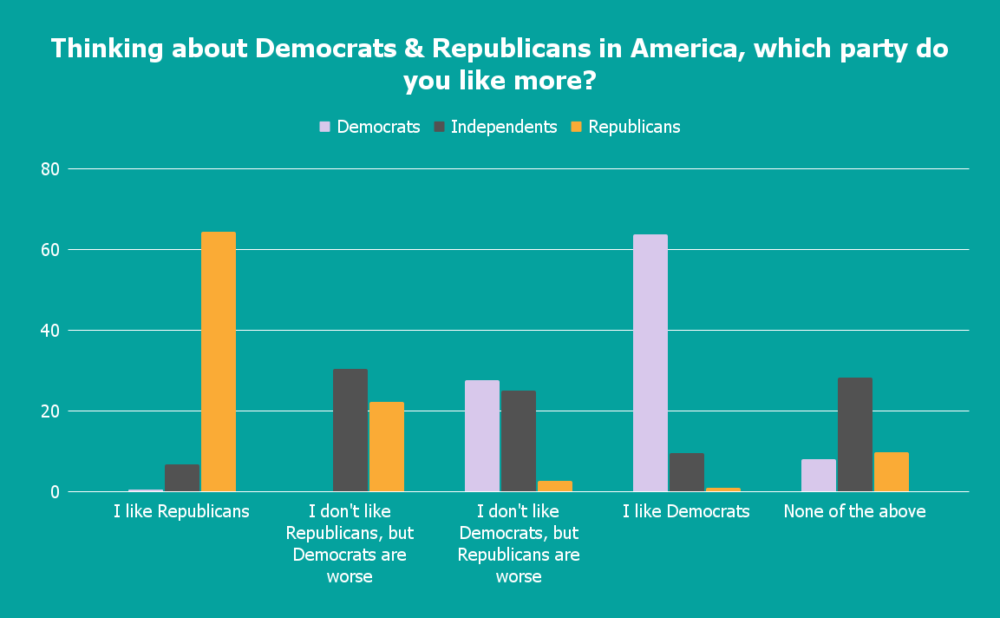
While more Americans are identifying as Independent, for the most part, voters feel wedded to their respective parties on the right and the left — and trapped within the two-party system.
3. Would A Third Party Solution Be Enough?
Americans agree we’re too divided, but don’t broadly view a third party as the solution at this time.
Citizen’s April 2022 survey examining perceived threats to American democracy found voters ranked a “lack of third party candidates” as just a 5.3 out of 10 in terms of concern, the second lowest of options offered. At the same time, they ranked “political polarization and division” second highest at 7.3, just behind “influence of money in politics.”
These findings suggest that while voters are deeply concerned about the problem of political division, they require further convincing that a third party is a way out. Moreover, voter skepticism that anything will fix us persists, as exemplified by comments in a Citizen June focus group:
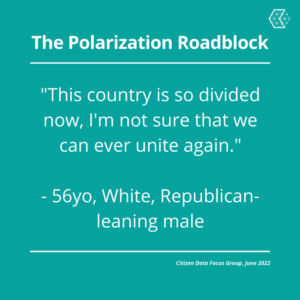
This perception and attitude of futility among Americans is fairly consistent and marks one of the biggest challenges to working towards change. This begs the question: would third parties reduce division, or do we need bolder solutions?
Data-in-Action
This may be the third party moment — but realistic obstacles must be acknowledged and worked through for it to work. Looking forward, it’s important to:
- Reach and engage moderate Americans who want better options — but be realistic about how futile they feel about division
- Elevate the concept of a third party alternative to raise awareness and help Americans view it as a viable solution
- Take a discerning view of data about the Independent voter as most Americans feel locked in the two-party system
- Continue to invest in targeted efforts to bring Americans together across political difference
Americans are dissatisfied with the status quo and yearning for change. At Citizen Data, we specialize in studying these issues and designing data-driven strategies to combat polarization and drive solutions to strengthen our democracy.
If you have any questions don’t hesitate to reach out. Enjoy Citizen’s Data for Democracy series? You can find past installments here.
Enhancing Election Trust
We recently wrote about the importance of trusted messengers for countering election-related disinformation. Since then, we’ve set out to better understand which types of people Americans trust most. Our recent Arizona-specific data indicates that some messengers can bridge divides.
